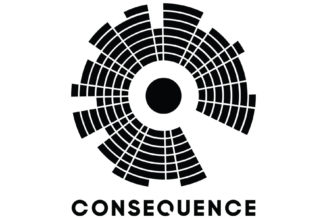With most crystal balls indicating an impending mad dash toward widespread adoption of electric cars, the R&D community is working overtime to solve the thorny problems limiting the market penetration of plug-in vehicles to around 4 percent of global passenger vehicle sales: not enough range or raw materials, and too much mass and cost. Here are some key advances to watch for in battery, fuel cell, and electric motor technology.
Battery Tech
Today’s lithium-ion batteries mostly use lithium nickel manganese cobalt oxide chemistry with a liquid or gel electrolyte. This stuff can freeze or catch fire, lithium “dendrite” spikes can form and cause a short circuit if the battery is charged too quickly, and cobalt is rare, expensive, and increasingly difficult to source ethically. Lithium iron phosphate chemistry eliminates cobalt and is less prone to overheating and explosion. Lithium manganese oxide also promises better temperature stability and safety. Replacing the graphite electrodes most batteries now use promises to boost energy density, and Tesla has hinted at a new electrode design employing silicon nanowires that could boost gravimetric energy density from today’s 254 Wh/kg to 400.
Solid-state batteries using ceramic or other solid electrolytes generally eliminate the fire risk, improve energy density, and permit ultra-fast recharging. QuantumScape’s design employs a simple current collector instead of an anode to save weight; prototypes are now delivering 400 Wh/kg, with 600 promised. Its ceramic separator promises to tolerate recharge rates roughly akin to the time you’d spend filling a gas tank. Solid Power is developing an iron-sulfur chemistry with Ford and BMW; the founder of defunct Sakti3 is working on solid-state batteries for Fisker. And we hear Samsung has a silver-carbon anode solid-state battery in the works.
Another important development is wireless battery management, which promises to replace heavy, costly copper wiring with faster Wi-Fi communication. All GM Ultium batteries will reportedly feature such a system. And on the materials availability front, we’re watching efforts to mine the Pacific Ocean’s Clarion-Clipperton zone, which is littered with loose potato-sized polymetallic nodules composed of 29.2 percent manganese, 1.3 percent nickel, 1.1 percent copper, and 0.2 percent cobalt. A virtual electric vehicle starter kit.
Fuel Cells
Most automotive fuel cells employ a proton-exchange membrane—they’re compact and light, and they operate at comfortable temperatures. But they need humidity (which poses water management and freezing challenges), and they require reasonably pure hydrogen. Production vehicles will use these systems for the foreseeable future. There are fuel cells that can directly extract hydrogen from methanol, but these produce CO2 and are now only used in industrial applications like forklifts. A third type is the flow battery, in which an electrolyte containing one or more dissolved electroactive elements flows through an electrochemical cell that reversibly converts chemical energy directly to electricity, depleting the electrolyte. The spent electrolyte must then be re-energized, either by plugging in and pumping it backward through the flow cell or by replacing it with fresh electrolyte and re-energizing the electrolyte offboard. Liechtenstein-based NanoFlowcell has developed a compact sports car called the Quantino powered by its flow cell but hasn’t announced a production partner. Of perhaps greater interest on the fuel cell front are technological approaches to generating, isolating, storing, and transporting hydrogen.
Electric Motor Tech
Abundant research is ongoing to improve the cost, weight, and efficiency of electric motors, too. China produces 95 percent of the rare earth materials in permanent magnets, but funding from the Defense Department’s REACT program (Rare Earth Alternatives in Critical Technologies) has produced three promising results: The University of Minnesota developed a strong and inexpensive iron-nitride magnet, the University of North Texas’ Ames Laboratory is exploring cerium as a more abundant neodymium replacement, and Argonne National Lab has an “exchange spring” magnet in the works, the science of which is utterly inscrutable to non-PhDs (happy Googling).
How magnets are arranged makes a big difference, as well. Most motors place them so their north-south poles radiate out from the axis of rotation with the gap between rotor and stator parallel to the axis. A new class of axial-flux motors, sometimes called “pancake motors,” arrange the poles parallel and the gap perpendicular to the rotation axis. This puts the magnets farther away from the axis of rotation, which increases their leverage (and therefore torque), and heat is easier to manage. The new McLaren Artura PHEV’s axial-flux motor is said to be 33 percent more power dense than the one used in the McLaren P1 hybrid hypercar.
Reluctance motors can do without permanent magnets or rotor windings altogether, and they deliver high power density at low cost, but are noisier and suffer “torque ripple” (a slight interruption in torque when transitioning between poles). But just as recent electronics advances have made synchronous reluctance motors easier to control, a power-pulsing concept from Tula Technologies promises to eliminate or hide this torque ripple, increasing this motor’s appeal for automotive applications.
Electric motors are so efficient that most do without a traditional transmission, but a better balance of launch torque and cruising-speed efficiency can be achieved with a second gear ratio roughly half that of the launch gear. Toronto-based supplier Inmotive’s bicycle-derailleur-inspired two-speed chain-drive concept requires no high-pressure lubrication or cooling, and it suffers no frictional losses from multiple gears maintaining continuous mesh. This can either stretch the range or shrink the battery by 7-15 percent. And Bosch has developed a continuously variable CVT4EV push-chain transmission offering ratio spreads of between 3.0 and 4.0, designed to provide sufficient torque from a smaller motor as speed varies.
What About Reuse/Recycling?
We were originally told tired EV batteries would get a second life of storing green energy or providing emergency backup power before being fully recycled. How’s that going so far?
Reuse: Nissan set up systems to assess and repackage its Leaf EV battery modules as replacement Leaf batteries, forklift batteries, and as the xStorage Home energy storage system. Similar home units reusing EV batteries are offered by U.K.-based Powervault, Sweden’s Box of Energy, and Australia’s Relectrify, but it’s hard to determine exactly the number or percentage of retiring EV batteries reused each year.
Recycling: When batteries are no longer usable, there are roughly 100 global companies that’ll recycle them, according to London-based Circular Energy Storage. Together they reportedly processed about half the roughly 200,000 tons of lithium-ion batteries retired worldwide in 2019. Most are in China and Korea, near where batteries are made; the recycling rate drops to more like 5 percent in the U.S., Europe, and Australia.
Canadian firm Li-Cycle is constructing what promises to be North America’s biggest battery recycling center in Rochester, New York. It’s designed to process nearly 28,000 tons annually—about a third of the battery waste stream we’ll face in 2030. Li-Cycle claims its hydrometallurgical (leaching) process involves zero wastewater, minimal greenhouse gas emissions, and no landfill waste, and it recovers 95 percent of the lithium, nickel, and cobalt. This will make Li-Cycle a primary supplier of these metals and the U.S.’ only domestic source of cobalt.
Redwood Materials in Carson City, Nevada, founded by Tesla co-creator J.B. Straubel, uses a combination of pyrometallurgy (thermal extraction) and hydrometallurgy processes to recycle Gigafactory-reject cells today. This recovers between 95 and 98 percent of the nickel, cobalt, copper, aluminum, and graphite, and more than 80 percent of the lithium. Redwood has ambitions of also recycling general consumer electronics, and others are launching similar recycling efforts to recover rare earths and other precious elements used in EVs. One potential hitch: Cobalt is the money metal that really makes recycling pay, so those new battery chemistries mentioned above that eliminate cobalt could end up setting recycling efforts back.










